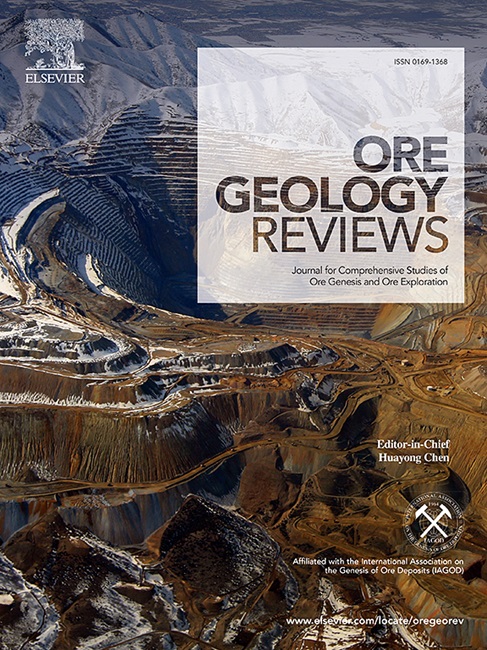Integrated geological and geophysical approaches to map structural controls of chromite deposits associated with ultramafic–mafic complexes of the Ingasana in the southwestern Blue Nile metallogenic province, SE Sudan
IF 3.2
2区 地球科学
Q1 GEOLOGY
引用次数: 0
Abstract
The Ingasana Mafic-Ultramafic Complex (IMUC) located in the southwestern Blue Nile region of Sudan, hosts significant chromite deposits of considerable economic importance. Although some preliminary studies have been conducted, however important genetic details, such as integrated geophysical and geological analyses, have not yet been thoroughly investigated. In this study, we conducted a detailed investigation of field features, petrography, and Integrated geophysical surveys in the ore prospect areas of the IMUC for the first time. The aim was to clarify the geological structures and metallogenic characteristics of the region, particularly focusing on the boundaries of rock units associated with chromite deposits. The results from the three-dimensional gravity inversion analysis identify the boundaries between different rock types, including subsurface density variations and major shear zones, revealing that most known mineralization sites are closely associated with structural features and the fault system of the area. Exploratory drill holes (D.H.) of different depths confirm the subsurface occurrence of thin chromite with serpentinite as ven bodies within the ultramafic rocks of Ingasana.On the other hand, Petrological Examinations (P.E.) results identify boundaries between other rocks. These findings further suggest that areas with high-density anomalies are the most favorable for hosting chromium, whereas regions covered with clay rocks exhibit the opposite potential. Furthermore, the study highlights the critical role of fault zones as conduits for magma and mineralizing fluids, emphasizing their significance in controlling the emplacement of mafic–ultramafic rocks and associated mineralization. The integration of geophysical and geological data not only enhances our understanding of the structural framework but also provides a robust basis for future exploration, guiding targeted prospecting efforts for chromite and other related mineral deposits in the IMUC.

求助全文
约1分钟内获得全文
求助全文
来源期刊

Ore Geology Reviews
地学-地质学
CiteScore
6.50
自引率
27.30%
发文量
546
审稿时长
22.9 weeks
期刊介绍:
Ore Geology Reviews aims to familiarize all earth scientists with recent advances in a number of interconnected disciplines related to the study of, and search for, ore deposits. The reviews range from brief to longer contributions, but the journal preferentially publishes manuscripts that fill the niche between the commonly shorter journal articles and the comprehensive book coverages, and thus has a special appeal to many authors and readers.
 求助内容:
求助内容: 应助结果提醒方式:
应助结果提醒方式:


